
Welcome to our guide for literally everything you need to know about how to keep a camper van heated.
After sleeping in a campervan during 30-degree weather, and below and freezing our butts off in a tent in 15-degree weather we know a thing or two about staying warm in a camper van.
Since winter is right around the corner for most of us, it’s a great idea to figure out how to keep your camper van nice and toasty.
Whether it be installing the right heater or applying some simple tricks, we will help you figure out your camper van heating problems.
This post may contain affiliate links, which means I’ll receive a commission if you purchase through my links, at no extra cost to you. Please read full disclosure for more information.
First, here are all of the items in a chart that we have decided to talk about in this post.
Before You Buy a Heater For Your Camper Van
Before you go off and purchase the most expensive heater for your camper van you should first do some preparation. You may even want to consider tossing aside the heater idea altogether.
Do You Need a Heater For Your Camper Van?
You may not need a heater in your mobile home this winter for several reasons.
- The climate is too warm– I find that we stay warm in temperatures 40 and above with a warm sleeping back and a well-insulated van. In fact, I found myself uncovering quite a bit in the middle of the night
- Your van is too small– Your van may be too small to accommodate a heater. Our van is quite tiny, so using anything other than an electric heater could prove to be hazardous.
- You are only a weekend traveler– If you are a weekend traveler it may not be worth your time and money installing a heater system in your camper van.
Fuel
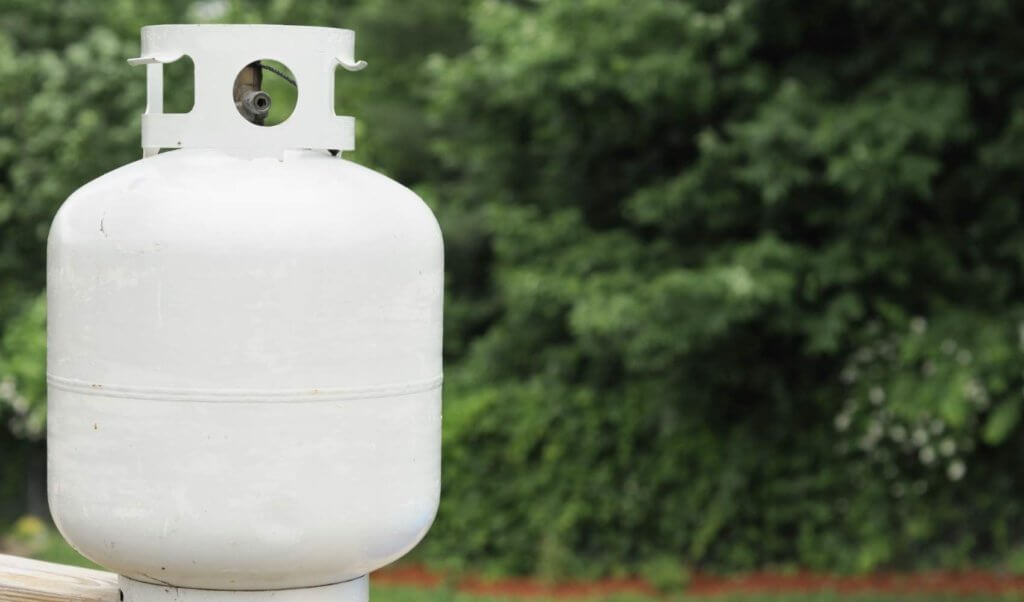
Heaters require a different range of fuels: propane, wood, diesel, or electricity. All of these fuels have different aspects such as cost, availability, and even safety.
For example, A wood stove requires wood to keep your camper van heated, therefore this may be one of the better options when it comes to availability. However, this is not the best option when it comes to safety in a small camper van.
Cost
A heater isn’t just about the initial cost. You may need to consider other costs down the road such as…
- Fuel
- Maintenance
- Installation of some heaters
Space
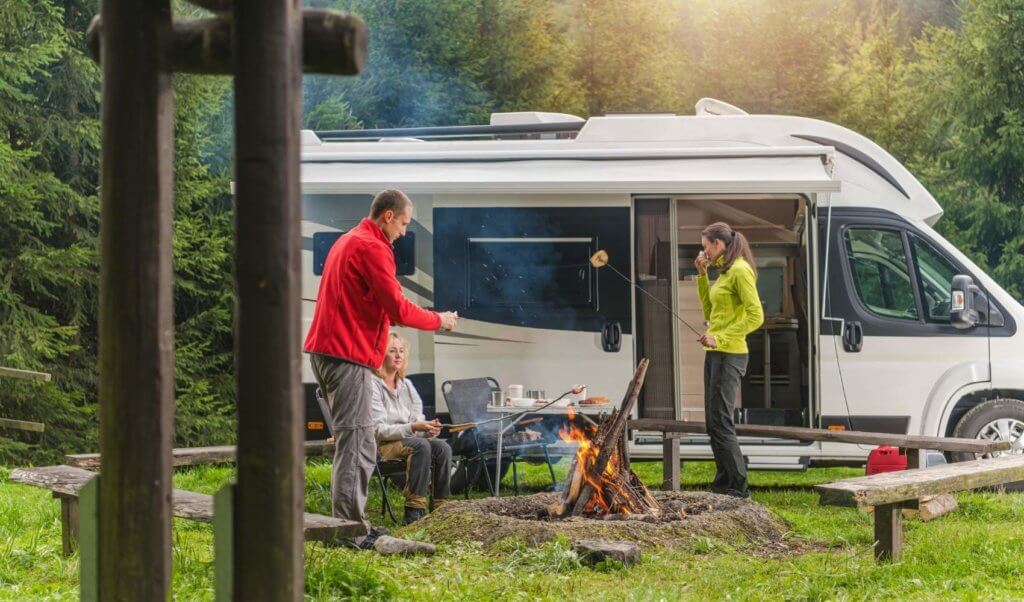
Consider the space you have in your camper van before you purchase a heat source.
If you have a small camper van it’s not a good idea to install a wood stove or even a diesel system for safety reasons.
Bigger vans require a bigger heat source such as ducted propane or diesel system.
Upkeep
Most camper van heaters need maintenance done to keep them working safely and properly.
Typically maintenance doesn’t require much money, but it is necessary for keeping you safe on the road.
You can either pay someone to do this regular maintenance or you can perform it yourself. Make sure you know what you are doing before you dive in.
Steps to Create a Warm Living Space in Your Camper Van
Thankfully there is a lot you can do to keep your camper van warm this winter, even without a heater!
Use Your Vans Built-In Heater
You would be surprised to find out that using your camper van’s built-in heater will work to keep you warm during those cold nights.
I have a friend living in Canada who travels in a Chevy Express camper van. She turns on her van heat for about 15-20 minutes, or until the van is warm. Then she turns the van off and goes to sleep.
We also do this sometimes in our converted Ford Transit connect, and it stays warm throughout the night. In fact, running a heater in our van tends to make the air stuffy and too hot.
If you decide to go this route, make sure you have a solid van build with proper insulation designed to keep heat in and cold out.
Insulation

Insulation is so important to keeping your camper van warm in the winter. Otherwise, the heat coming from your heater will escape through the floors, windows, and walls.
When you first build your camper van make sure you have a solid build by including camper van insulation in the shell of your camper van.
Don’t forget to cover up your windows and doors. You don’t need permanent window covers, just some temporary ones for nighttime. I mean who wants to permanently cover up those beautiful views?
If you have a front cab, make a thick curtain to block airflow from the front of the van to the living quarters. The front of the cab has many windows and doors where cold air can sneak through, blocking this area off will greatly help keep your camper van warm.
Heated 12V Blanket
You can run a 12V heated blanket right off your camper van battery. Depending on the climate you are in a heated blanket is all you will need to keep you warm.
Warm Clothing

I can’t stress enough how important it is to wear warm clothing in the winter months.
Wool is the ultimate insulator and can keep you warm even if you sweat at night. One of my biggest problems is cold feet because they sweat a lot. After wearing wool socks I stay warm all winter.
Keep your head and neck covered, heat tends to escape these areas of the body the most. Try wearing a beanie to bed or even cover up with a mummy sleeping bag.
Drink Hot Drinks

Staying hydrated in the winter months is crucial to regulating your body temperature and keeping warm.
You are actually more likely to become dehydrated during cold weather because you don’t feel as thirsty when you are cold.
Some great items to drink when you are cold include warm water, tea, or camper van coffee.
You can also try eating warmer items like soups to help warm you up.
Circulate Your Camper Van
Air circulation can come in several forms when talking about camper van ventilation. It could mean a ceiling fan or cracking open a window.
Regardless of how you chose to ventilate your van, it’s important to keep airflow even in the winter.
Airflow will keep your tiny home from creating mold, allergens, and general stuffiness.
A great heater and ventilation system is what it takes to create a comfortable and safe environment for you to live in during the winter months.
Appropriate Bedding
Just like clothing, camper van bedding can make a huge difference in keeping you warm during the winter months.
For extremely cold weather, I would recommend using a sleeping bag equipped for negative-degree weather or using a thick wool blanket.
If you decide to layer your bedding make sure you have the warmest material, wool, closest to your body. Wool will wick away sweat while keeping you warm.
Build a Proper Bed Platform
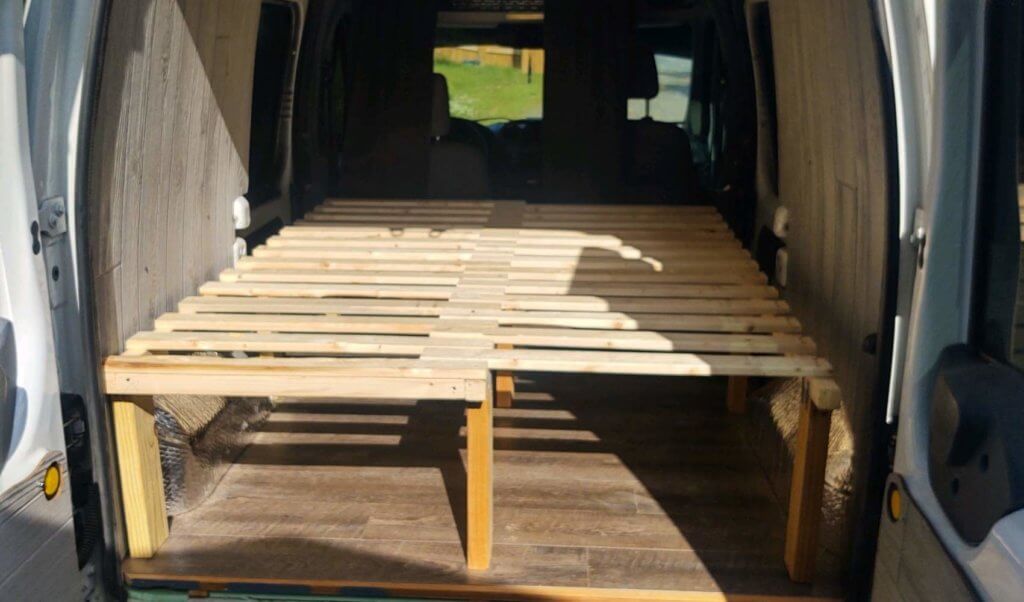
Building a platform for your camper van bed helps get you off the cold floor of your van.
The cold air can sit easily near the bottom of your van near the floor because hot air rises cold air falls.
Placing your bed in the air on something like a slat bed will help you stay warm at night. Air will also circulate better under the bed preventing mold.
I also recommend using a thick camper van mattress like memory foam to help keep the air from escaping through the material.
Using an air mattress would allow the air from the bottom of the frame to escape through the materials making for a cold night.
Use a Heater in Your Camper Van
One of the best ways to stay warm during the winter months is to use a camper van heater. Whether you have a large or small motorhome there is an appropriate heater for your living quarters.
There are several types of heaters that can keep you warm in a camper van, and they all serve different purposes.
- Electric
- Propane
- Diesel
- Wood Stove
Electric Heaters for Camper Vans
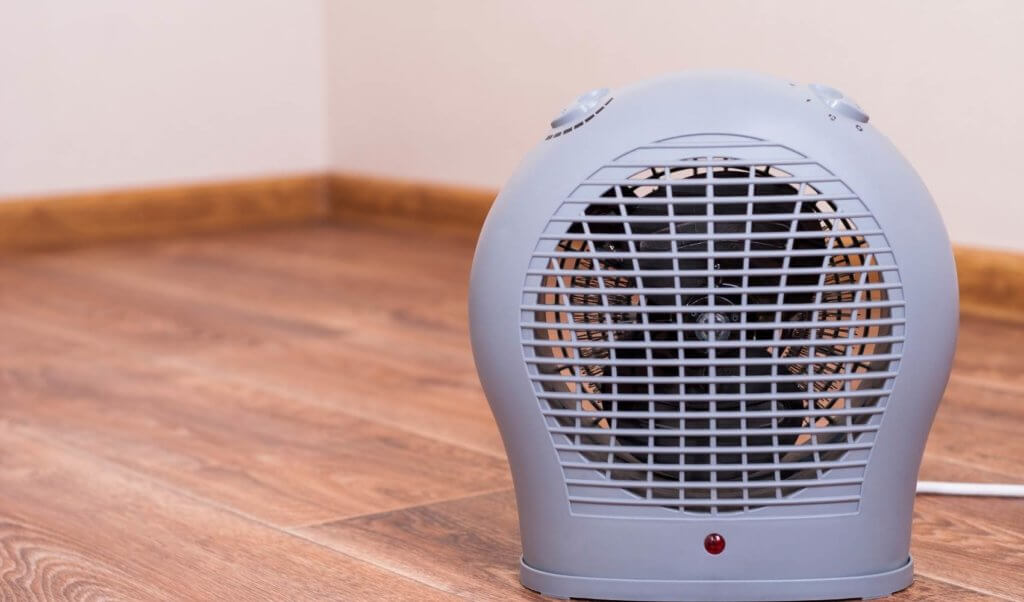
My husband Clark and I opt for the electric heater in our Ford Transit Connect van. We have a temperature-controlled one, so we don’t get overheated at night.
Campgrounds are typically where we stay (with the occasional boondocking), so we have electric hookups at most sites for constant electric heat.
How Does It Work
you can use several items to power your electric heater. Many people will use their car battery to power it. However, you cannot run the heater all night when using your car battery or the battery will die.
If you use your car battery try heating up the van with your portable heater before you go to bed and once you get up in the morning. You will be surprised at how much heat a van can hold when properly insulated.
Also, if you open the door in the middle of the night for whatever reason, you can turn the heater back on until your living space is heated back up.
If you don’t want to risk your van battery, you could use a portable power station to run your heater. Although, depending on the wattage of the heater and the power station it may not run through the night.
Wattage– The wattage of the heater you choose will play a huge part in how long you can run it off a van battery or a portable power station. Try a low-wattage heater to get the best results
Safety Tips
When using any type of heat source there is always a fire hazard. Having a safety shut-off and making sure there is nothing surrounding the heat source will help reduce the risk of fire.
Pros For Electric Heaters
- Easy setup
- Great safety features
- Compact
Cons For Electric Heaters
- Not easily portable
- Needs power source
- Only good for small spaces
Portable Propane heaters for Camper Vans

Another great option for small camper vans is a propane heater, especially when you are free camping.
How Does It Work
Portable propane heaters typically only require a small propane canister. We use our portable Buddy propane heater when camping in the tent or when boondocking in the van.
These portable heaters don’t last all night, however, so make sure you have more canisters on hand to fuel it longer. Ours will last about 4 hours with one 16 oz. propane canister and on the lowest setting.
Installation
There’s really no installation involved with a portable heater. Just hook up the propane canister, turn on the heater, crack open a window, and enjoy the heat.
Safety Tips
With any propane equipment, you will need a carbon monoxide detector and proper ventilation.
Proper ventilation is necessary when using a propane heater because these heaters put out more moisture than most.
Pros for Propane Heaters
- Cheap boondocking option
- Easily portable
Cons for Propane Heaters
- Needs ventilation
- Requires canisters to run
- Won’t run all night with one canister
- Can take up quite a bit of space
- Puts more moisture into the air
Propane Furnace for Vanlife
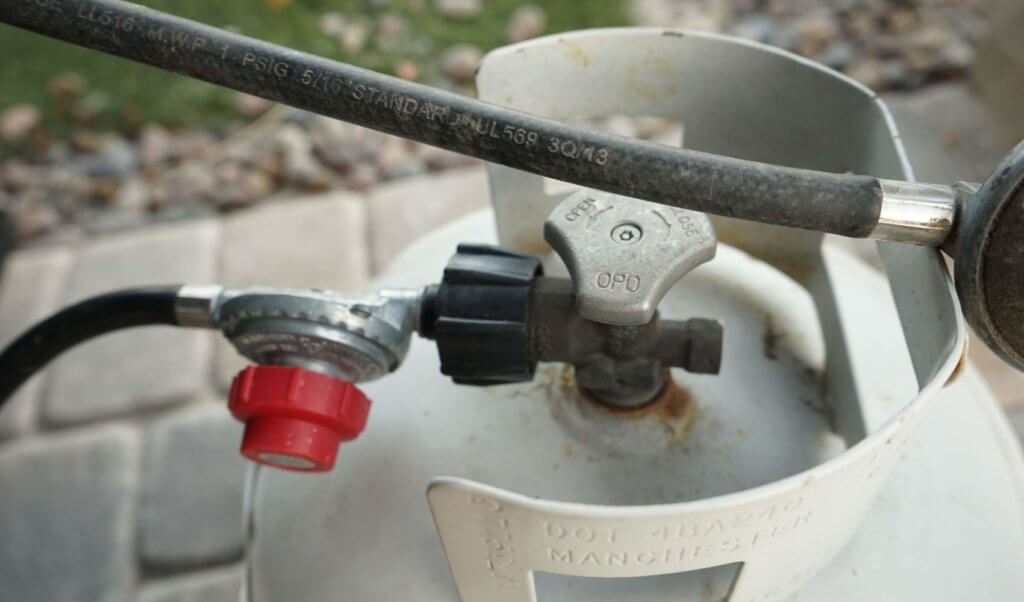
If you want a ducted system, like the Propex propane furnace, you can purchase a propane furnace. Typically this system will have a bigger propane tank than the small portable ones.
The system is fairly small and you can fit it just about anywhere in your van as long as you find a place to drill two small holes. I’ll explain this more a little later.
How It Works
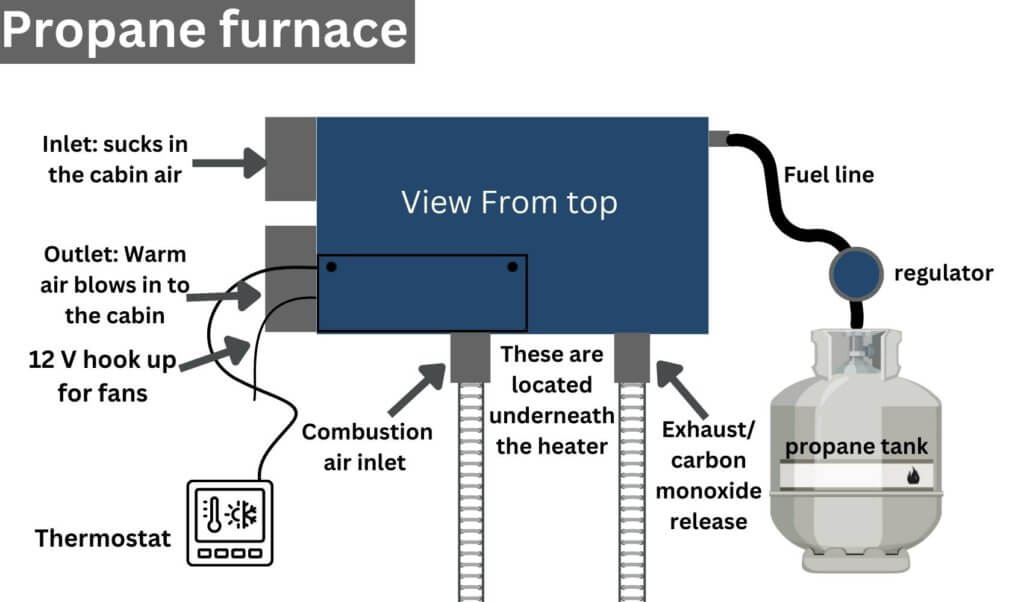
There are several different components to a propane furnace and they all act together to provide you with the warmest camper van.
- The two pipes at the bottom of the heater are your combustion inlet and exhaust. The exhaust is where your carbon monoxide escapes. These two work together to ignite and heat up the heat exchange plate.
- There are two other inlets and outlets on the left-hand side of the picture above. This is for the air in the cabin. The air goes through the inlet through the heat exchange plate and goes back out through the outlet as warm air. This heats up your camper van cabin.
- You may have also noticed a small box on the unit. This opens up and wires hook up to the electronic board inside. The only two cords you will need are the 12V for the fans and a cord for the thermostat.
- Lastly, you have your fuel line and your fuel tank. This is located on the right side of the diagram.
Installation
The furnace is typically installed directly under the passenger seat of the camper van.
Along with the furnace, you will need a regulator, a fuel hose, and a constant source of propane to properly heat up your camper van. Some systems already come with those items.
Typically people will drill two holes in the floorboard of their van. These holes are for the exhaust and combustion pipes.
Then you will need to install the fuel tank and fuel line. Typically the fuel tank should be installed outside of the van.
You also need to duct your air intake and output. These are both ducted into your cabin.
Safety Tips
I wouldn’t recommend installing this furnace yourself because it requires you to mess with dangerous gasses.
The unit itself claims to be very safe because no exhaust fumes are in your cabin, they go directly outside.
Install a carbon monoxide detector just to be on the safe side. There are ones made specifically for RVs and camper vans.
You should also make sure none of your lines on the system are crossed, kinked, or have holes. Most systems will shut off if anything isn’t in working order, but checking on your lines will ensure you are in a safe environment.
There may be things you cannot see even if you inspect the unit yourself. It’s a good idea to get a professional to do regular maintenance to catch anything that could be wrong with it.
Diesel Heaters For Camper Vans

A Diesel heater is possibly one of the more popular ways to heat up a camper van during the winter. After installation, everything is quite simple and fairly cheap to run.
How does it Work?
A camper van diesel heater works just like a propane furnace. It takes in air through a pipe and sends it through a combustion chamber. It then releases warm air out into the cabin.
This particular camper van heater gets its fuel from the diesel gas line that is already in the van, making it a great boondocking option. Plus you won’t need to install a separate tank for your fuel to heat up your van.
Diesel heaters are more efficient than propane heaters. These heaters will run for 24 hours on just 1 gallon of gas. Diesel also has more power than propane and will distribute warm air more evenly in your camper van.
Installation
Installation can be somewhat easy, but pricey if you get someone else to do it. $700-$1500 is typically the range you will pay to get a diesel heater installed.
You can install a diesel heater yourself. Most people place the device under the driver’s side seat and duct it into the back cabin.
I wouldn’t recommend installing this camper van heater yourself because it involves complicated steps and you have to install them into your van’s fuel line.
Safety Tips
If you do install the heater yourself make sure to really pay attention to where you install the exhaust. You don’t want to install it right under a window, where the intake is, or somewhere you will be spending time outside the van.
Pros Of Diesel Heaters
- Most fuel-efficient Option
- Takes up little to no space
- Slow and steady airflow
- Great for Vanlifers who boondock
Cons of Diesel Heaters
- Can be quite noisy
- It does not work at high altitudes
- Must be installed before use
Diesel Heater options
Van Life Wood Stoves

How Does It Work?
A wood stove will give you that homey feeling with its warm glow, and toasty feeling.
This type of camper van heater uses wood as its fuel, making it fairly easy to find more fuel anywhere on the road.
The unit itself consists of a stove where you can place the wood. When you close the door of the furnace you can control the efficiency by messing with the air vents. The air vents control the amount of airflow into the furnace
It takes up space and is not suited for small vans. However, some have been able to pull it off and it looks quite homey.
Installation
Not only will you have to purchase a wood stove, but some of the other necessary items with it.
Things like the vent pipe, chimney cap, humidity monitor, and heat-powered fan are items you will need to purchase separately from the unit.
The chimney and cap is installed through your camper van roof. If you are uncomfortable with cutting a hole in your roof, I would recommend diesel or propane options.
A chimney cap is also not a great option for stealthy camping as it sticks out like a sore thumb on the top of your roof.
Safety Tips
Do not place anything near or on the wood stove. The surrounding area can become quite hot.
Pros to owning a wood stove
- Looks and feels warm
- Wood is free when you can find it
- Could possibly cook stuff on it
Cons to owning a wood stove
- Not always able to find wood
- Needs too many parts for installation
- Messy
- Complicated installation
- Takes up a lot of space
Search here for wood stove options.
Frequently Asked Questions
here are some other questions you may have about staying warm in your camper van this winter.
How to Warm Up In The Mornings In a Camper Van?
If you use your camper van heater right before you go to bed and turn it off while you are sleeping, mornings are cold.
You can do a few things to combat the cold mornings, here are just a few suggestions.
- Turn your camper van heater on for a few minutes.
- Drink a warm cup of coffee.
- Eat warm oats or grits.
- Lite the fire pit outside.
- Wear warm clothing the night before, especially socks.
Are Heaters Safe to Use in a Camper Van?
When it comes to heating your camper van there will always be a fire hazard, but here are some tips to help you stay as safe as possible.
1.Always have a smoke detector and a fire extinguisher in the van. Even though we would all love to think we would never leave blankets or clothing near our heat source it still happens. It’s always best to be prepared for a fire.
2.Purchasing portable electric or propane camper van heaters with the tip-over safety feature and over-heating shut-off offers a much safer option. Most heaters will have this on them. Basically, if the heater tips over it will automatically turn off.
3.Have a designated area for your heater, especially if it’s portable. Don’t leave any clothing, blankets, or cloth near it. Make sure the heater has room to “breath”.
4.Proper ventilation is a must, do the proper research on which heater needs what type of ventilation. Some may only need a window cracked open or need a ventilation cap installed.
5.Always have a carbon monoxide and a gas detector installed, especially if you have a propane or a diesel heater.







So important to keep up with maintenance of heaters! I will keep these tidbits in mind when we take our family trip!
Awesome! So glad you found it useful.
These are great tips! I am so envious of van life, but I have 5 cats. Lol.
Hey, take the 5 cats with you. haha.